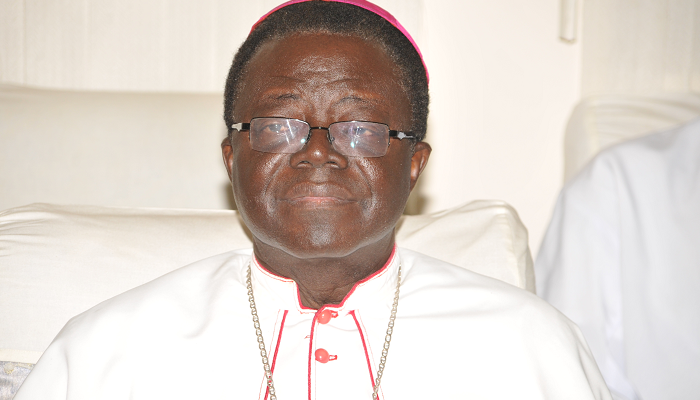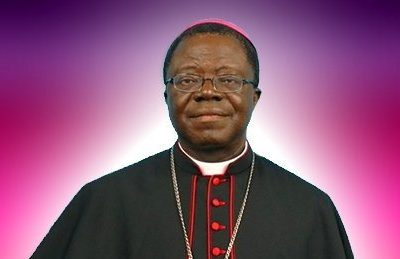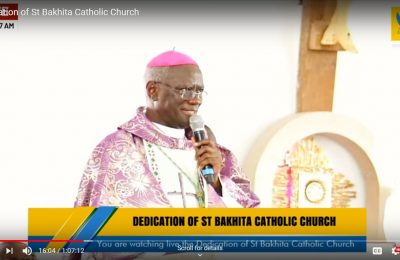Yoga and Transcendental Meditation is spreading wide among a lot of people. Some Christians, however have raised red flags indicating that these practices have pagan origins. In this piece Most Rev. Joseph Osei Bonsu, Former President of the Ghana Catholic Bishops’ Conference throw more light on these from the perspective of Christianity.
In order to determine whether Yoga and Transcendental Meditation are compatible with Christianity, we need to establish what they are all about.
Transcendental Meditation
Transcendental Meditation owes its origins to the late Maharishi Mahesh Yogi (12 January 1918-5 February 2008), an Indian guru who derived it from the ancient Vedic tradition of India in the mid-1950s. It is a technique for avoiding distracting thoughts and promoting a state of relaxed awareness.
Maharishi Mahesh Yogi taught thousands of people during a series of world tours from 1958 to 1965, expressing his teachings in spiritual and religious terms. This method of meditation became more popular in the 1960s and 1970s, as he shifted to a more technical presentation, and his meditation technique was practiced by celebrities.
According to the Transcendental Meditation movement, it is a non-religious method for relaxation, stress reduction, and self-development.
While meditating, the person practicing Transcendental Meditation sits in a comfortable position with eyes closed and silently repeats a mantra. A mantra is a word or sound from the Vedic tradition that is used to focus one’s concentration.
A mantra is practiced for 15-20 minutes twice a day. It is taught by certified teachers through a standard course of instruction. According to those who practice Transcendental Meditation, when meditating, the ordinary thinking process is “transcended”, i.e., replaced by a state of pure consciousness. In this state, the person meditating achieves perfect stillness, rest, stability, order, and a complete absence of mental boundaries.
Yoga
The origins of yoga are obscure but it is thought to have been developed in India over thousands of years as a form of physical and spiritual practice geared towards enlightenment. Yoga is a Hindu spiritual and ascetic discipline, a part of which, including breath control, simple meditation and the adoption of specific bodily postures, is widely practised for health and relaxation.
Yoga does more than burn calories and tone muscles. It is a total mind-body workout that combines strengthening and stretching poses with deep breathing and meditation or relaxation. Yoga is a great activity especially for those with diabetes, high blood pressure, high cholesterol, or heart disease. It gives one strength, flexibility, and mind-body awareness. The benefits include increased flexibility, improved muscle tone, calmness and lower stress.
The Christian, Transcendental Meditation and Yoga
Some Christians are opposed to both transcendental meditation and yoga, citing their pagan (i.e. non-Christian) origins. With regard to yoga, some Christians believe that the “stretching” part is all right, but everything else that comes with it is not. Other people do not like yoga because of its focus on a state of being, popularly known as “mindfulness”.
Mindfulness in yoga is defined as focusing one’s awareness on the present moment. In other words, it is paying attention to what is around you without getting hooked on the past or worrying about the future. However, many Christians have had life-changing experiences with yoga, as it has offered them relief from physical and emotional ailments that they had trouble combatting through other methods. How should followers of Christ respond to these ancient practices and should they withhold from these most popular fitness trends found today? Do their origins in Eastern philosophies or religions mean that Christians should not participate in them?
The fact that yoga has Eastern origins or roots does not determine everything. There are a number of holidays and traditions we celebrate including Mardi Gras, Valentine’s Day, Birthdays that have pagan origins, or elements of paganism. Many of these are celebrated by Christian culture and embraced by common culture. How many of us put up Christmas trees to celebrate the birth of Christ?
According to some sources, the origins of the Christmas tree are closely tied to pagan winter rites and even tree worship among pre-Christian Europeans. Christians took something that had pagan origins and re-interpreted it, giving it new meaning as a symbol of Christian faith.
This is similar to what has been done with yoga and transcendental meditation – they have been reinterpreted to fit the needs of those who are practising it. Just as in the case of Christmas trees and many other holidays we love, yoga and transcendental meditation can be re-interpreted to benefit followers of Christ.
Another thing that many Christians who are anti-yoga fail to realise is that mindfulness is not necessarily Hindu. Many early Christian spiritual teachers taught their disciples to develop something they called nespis, which means to be wakeful and attentive and to watch what was around them.
Jesus calls us to let go of worry and anxiety by being awake, alert and paying attention to our surroundings. Jesus tells us, “Do not worry about your life, what you will eat or drink; or at your body, what you will wear. Is not life more than food, and the body more than clothes?
Look at the birds of the air; they do not sow or reap or store away in barns, and yet your Heavenly Father feeds them. Are you not much more valuable than they? Can any one of you by worrying add a single hour to your life?” In this text, Jesus calls us to look at the birds and consider the lilies, to accentuate the positive and eliminate the negative.
The Vatican’s Congregation for the Doctrine of the Faith, in a document entitled Letter to the Bishops of the Catholic Church on Some Aspects of Christian Meditation (15 October 1989) comments on the use of Eastern methods for Christian meditation.
By “Eastern methods”, the document is referring to practices inspired by Hinduism and Buddhism such as Zen, Transcendental Meditation and yoga, which involve prescribed postures and controlled breathing.
The document says that the majority of the great religions which have sought union with God in prayer have also pointed out ways to achieve it. It says further, “Just as ‘the Catholic Church rejects nothing of what is true and holy in these religions’,[1] neither should these ways be rejected out of hand simply because they are not Christian. On the contrary, one can take from them what is useful so long as the Christian conception of prayer, its logic and requirements are never obscured” (par. 16).
The document, however, notes that attempts to combine Christian and non-Christian meditation are “not free from dangers and errors” and expresses particular concern over misconceptions about body postures in meditation: “Some physical exercises automatically produce a feeling of quiet and relaxation, pleasing sensations, perhaps even phenomena of light and of warmth, which resemble spiritual well-being.
To take such feelings for the authentic consolations of the Holy Spirit would be a totally erroneous way of conceiving the spiritual life” (par. 28).
It goes on to say: “The love of God, the sole object of Christian contemplation, is a reality which cannot be ‘mastered’ by any method or technique” (par. 31). The document draws attention to the nature of Christian prayer which it describes as:
a personal, intimate and profound dialogue between man and God. It expresses therefore the communion of redeemed creatures with the intimate life of the Persons of the Trinity. This communion, based on Baptism and the Eucharist, source and summit of the life of the Church, implies an attitude of conversion, a flight from ‘self’ to the ‘You’ of God. Thus Christian prayer is at the same time always authentically personal and communitarian.
It flees from impersonal techniques or from concentrating on oneself, which can create a kind of rut, imprisoning the person praying in a spiritual privatism which is incapable of a free openness to the transcendental God (par. 3).
In conclusion, we can say that Christians should not look down on yoga and Transcendental Meditation because of their non-Christian origins. Whatever is good in these methods in terms of helping the body to relax and be able to concentrate on meditation can be adopted.
In other words, these methods should be seen as a means to an end and not an end in themselves. The content of Christian meditation, which essentially centres around the Triune God, is something that can only be provided by Christianity.
[1]The Declaration on the Relation of the Church with Non-Christian Religions (Nostra aetate) of the Second Vatican Council, 28 October 1965
Source: Most Rev. Joseph Osei Bonsu






















